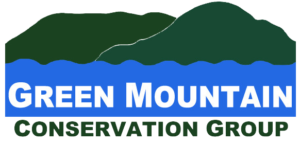GMCG staff and AmeriCorps members, along with about 200 students, teachers, chaperones and volunteers, once again took to the rivers this fall for the annual Volunteer Biological Assessment Program (VBAP). This was the 19th year of the program in the Ossipee Watershed, and we had a few new teachers and a whole new age group joining the program.
Schools that participated in VBAP this year were: Effingham Elementary School; K.A. Brett School in Tamworth; Lakeside Primary School in Conway; Ossipee Central School; and Sandwich Central School. Kindergarteners through 6th graders learned about biomonitoring using aquatic macroinvertebrates as water quality indicators and the importance of long-term monitoring and keeping water clean and healthy. Collectively, these schools studied the water quality of the Bearcamp River and Swift River in Tamworth, the South River in Parsonsfield, and the Cold River in Sandwich.
Water levels were low in all of the rivers this year from lack of rain, and some rivers had much more debris like fallen trees and strainers likely from heavy snow, spring flood events and stream bank erosion. Students made observations about all of these changes, as well as land use activities near the riparian zone and human and natural impacts that could influence water quality. Students helped collect macroinvertebrates, took water quality measurements of dissolved oxygen, temperature, conductivity, pH, turbidity, and took samples to be analyzed at GMCG’s Water Resource Center for microplastics.
Since microplastics sampling began in 2021, they have been found at every river or stream site sampled, and this year was no different. Microfibers, micro fragments, and microbeads were all noticeable when samples were filtered, dyed with Nile Red and viewed under the microscope using blue light. While the notion of keeping nonpoint source pollution like microplastics from getting into the environment and waterways can be overwhelming, students were encouraged to take small steps to reduce their impacts whether at school or home by picking up litter, using less plastic (especially single use plastics), and becoming good stewards of waterways where they live. This year, three rivers had water quality scores of “Excellent” and one had a score of “Good” from the biomonitoring. To see the full reports, visit gmcg.org under the “Education” tab.
In October, the Trout in the Classroom (TIC) program annual training occurred at the New Hampshire Fish and Game Department in Concord, which will be followed by classroom visits and trout egg deliveries in December and January. Four schools in the Ossipee Watershed are set to participate in the program this year, including: Freedom Elementary School; Lakeside Primary School; Sandwich Central School; and Northeast Woodland Charter School. GMCG has helped schools across the watershed bring this program to their students since 2009. The program weaves together the VBAP water quality monitoring of the fall nicely in that the students will eventually release the trout into the river or stream they studied through VBAP. Eastern Brook Trout are indicators of excellent water quality and need specific habitat conditions to survive. NH Fish and Game will be giving out a total of 72 permits for TIC this year, and the program will reach around 4,500 NH students. Over 14,000 brook trout eggs will be dispersed to schools ranging from Colebrook all the way down to Hudson.
Thank you to Ossipee Central School for hosting the annual Community VBAP Presentation this year, and to all of the teachers, parents, caregivers, chaperones, staff and AmeriCorps members who helped make it possible! Thank you as well to the foundations that supported the watershed education programs this year: The Alfred Quimby Fund and The Kendal C. and Anna Ham Charitable Foundation. If your school or homeschool group would like to participate in this program in the future or you would like to help sponsor the program for our local schools, please contact Tara at education@gmcg.org.




